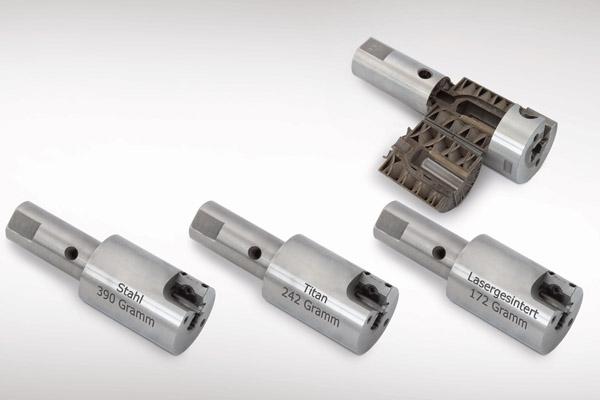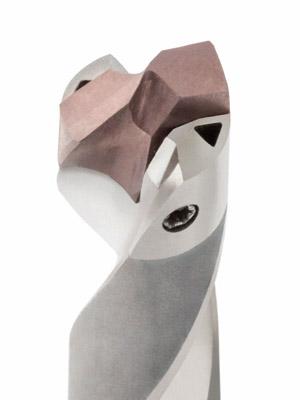You may not have realized that such a thing as a high-tech drilling solutions think tank existed, but it does and has since 1950. The think tank, named Mapal, has spent its history searching out and experimenting with innovative metalworking solutions. Now, they are exploring the frontiers of precision tool production using advanced manufacturing with the QTD-series insert drill with diameters, ranging from 8 to 32.75 mm.
 This new line of drill inserts are manufacturing using a hybrid technique. Dr. Dirk Sellmer, Head of Research and Development at Mapal explained:
This new line of drill inserts are manufacturing using a hybrid technique. Dr. Dirk Sellmer, Head of Research and Development at Mapal explained:
“Hybrid strategies are the ideal method of choice. Simple component parts are machined and more complex areas are then build up additively. Unmanned manufacturing and a reduction of tooling-up times and reworking in the digital laser melting approach are other aspects which improve the economy. However, the greatest advantage of moving from a conventional manufacturing strategy to additive manufacturing was that it facilitated an entirely new geometry, increasing the performance of the tools.”
 In this case, the additive parts are created using the LaserCUSING system by Concept Laser. While the tool shank is conventionally machined, the drill itself is laser melted. This combination of techniques makes the production of these tools more economical. It also has helped to expand the size of drills Mapal can offer. Prior to adopting this hybrid technique, 13 mm was the smallest size that could be manufactured.
In this case, the additive parts are created using the LaserCUSING system by Concept Laser. While the tool shank is conventionally machined, the drill itself is laser melted. This combination of techniques makes the production of these tools more economical. It also has helped to expand the size of drills Mapal can offer. Prior to adopting this hybrid technique, 13 mm was the smallest size that could be manufactured.
“One reason for this is the coolant supply usually housed in the tool body. A central coolant supply weakens the core of the drill, which makes it unstable. In addition, the cooling channels must be smaller. That reduces the flow of coolant to the insert. The new steel tool body design with spiral cooling channels is not usually used for small diameters. But it allows even solid drills to be produced in the 8 to 12 mm diameter range.”
The advantage of drills with more advanced cooling systems means that individual drills are able to be in use for longer periods of time. A further advantage of the hybrid manufacturing system comes in the removal of the strain to which conventionally machined parts are subject to during their creation. Due to constantly changing exposure locations for material addition, the tension dissipates internally during the process of building the tool.
Dr. Sellmer anticipates the creation of a range of new products to result from the possibilities made present through additive manufacturing:
“In a broad sense, we can say that the parts of the future are more intelligent or complex, and also offer better performance. They also give us new design options. And that will result in new geometries with new performance features. In general, additive manufacturing facilitates new product solutions, which would be inconceivable with conventional methods. Every project implement is a learning experience.”
What do you think about the potential the 3D printing has in the future of manufacturing drills? Discuss in the Mapal Forum thread on 3DPB.com.
Subscribe to Our Email Newsletter
Stay up-to-date on all the latest news from the 3D printing industry and receive information and offers from third party vendors.
Print Services
Upload your 3D Models and get them printed quickly and efficiently.
You May Also Like
Reinventing Reindustrialization: Why NAVWAR Project Manager Spencer Koroly Invented a Made-in-America 3D Printer
It has become virtually impossible to regularly follow additive manufacturing (AM) industry news and not stumble across the term “defense industrial base” (DIB), a concept encompassing all the many diverse...
Inside The Barnes Global Advisors’ Vision for a Stronger AM Ecosystem
As additive manufacturing (AM) continues to revolutionize the industrial landscape, Pittsburgh-based consultancy The Barnes Global Advisors (TBGA) is helping shape what that future looks like. As the largest independent AM...
Ruggedized: How USMC Innovation Officer Matt Pine Navigates 3D Printing in the Military
Disclaimer: Matt Pine’s views are not the views of the Department of Defense nor the U.S. Marine Corps Throughout this decade thus far, the military’s adoption of additive manufacturing (AM)...
U.S. Congress Calls Out 3D Printing in Proposal for Commercial Reserve Manufacturing Network
Last week, the U.S. House of Representatives’ Appropriations Committee moved the FY 2026 defense bill forward to the House floor. Included in the legislation is a $131 million proposal for...



































